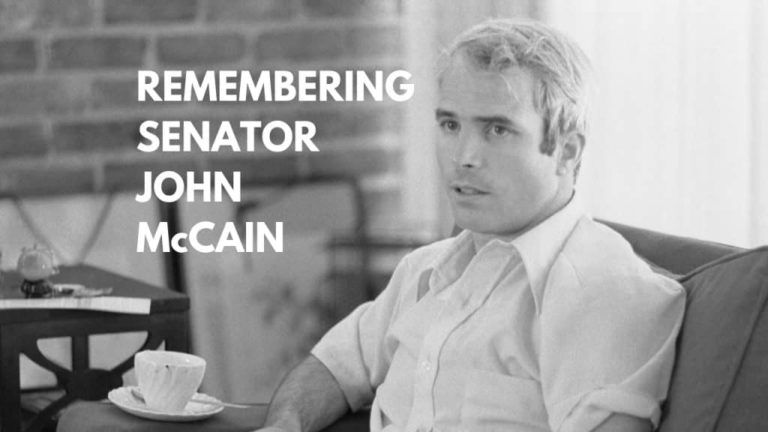Faithful Stewardship: How to Prosper with Purpose
Editor's Note: The views and opinions expressed in this article are those of the author and do not necessarily reflect the official policy or position of Regent University, its faculty, administration, or affiliates.
As an economics professor, I regularly get asked for money-management advice. I have advanced degrees in economics and finance but let me assure everyone: There is no secret knowledge on getting rich. But there is a historically proven, sure-fire way to get rich that does not require secret information and is easily understood. Surprisingly enough, this simple, four-step program is increasingly shunned by many, especially the young, but it is tried and true.
This may sound like an email from a Nigerian prince, but this is no imaginary gold trapped in an account. So let me get to it:
Step 1: Get A Job and Keep It
As simple and obvious as this sounds, it is surprising how many are not doing it, as we can see from the Labor Force Participate Rates for the United States. There are many details, but some key figures show that in 1950, 86.4% of men (older than 16) were in the labor force. In 2020, that number was 70.3% and is projected to be 66.8% in 2050. Women have a different trend, since historically they have not been in the labor force nearly as much. Their participation peaked in 2010 at 62.1% and has fallen some since, as well.[1]
There are several possible explanations for this, but most are not positive. We are wealthier (median income is the highest it has ever been) and maybe fewer people need to work. I doubt this explains much and would argue leaving the labor force is not good, but other explanations are objectively negative: an epidemic of opioid and other drug abuse has impacted ability and desire to work; a cultural altitudinal shift about the value of the trades and other “handsy” work compared to an emphasis on college and white-collar work; the increase in mental health issues; and the widespread failure of the education system to properly prepare young people for the work world can all take some blame.
But the choice to get a job and work at it diligently to acquire skills, get promoted, or find new, better-paying work — what we used to call a career track — is an individual choice, and the first big step to getting rich is to get a job and stay employed.
Step 2: Live Below Your Means
Many people, especially young people, want to purchase nice things they see on various media platforms or that their parents have. They forget how “staged” media can be and that their parents have a 30-year head start. Everyone should budget as though they have 20% less income than they do. Do not live at the edge of your budget; it leaves no room for emergencies, the occasional splurge, the unforeseen, or for savings.
Step 3: Save Early and Save Often
If one does Step 2, then Step 3 is natural. If one does not do Step 2, then Step 3 is impossible. In some ways, this step is just math. But, in other ways, this is a mindset that takes discipline and long-term vision. I think the best way to explain this point is a simple example in the table below. Over its existence, a diversified portfolio that reflects the New York Stock Market has averaged an 8-10% annual return. So, using the low end of 8% and assuming a $1,000 initial investment, let’s see how investing early makes a difference.
The Future Value of $1,000 Invested at Different Ages
| Age at which $1,000 is Invested | 20 years | 25 years | 30 years | 35 years | 40 years | 45 years | 50 years | 55 years | 60 years |
| Value of Investment at age 65 | 31,920 | 21,724 | 14,785 | 10,062 | 6,848 | 4,661 | 3,179 | 2,259 | 1,469 |
This is just an example of a one-time investment allowed to grow at a conservative rate. If you develop a savings habit early and consistently, you will be very well-off over time. For example, if you started investing $100 a month every month for your 45-year working life (assuming an 8% rate of return), you will have almost $400,000 at aged 65. Want to be a millionaire when you retire? Invest $280 a month.
Step 4 Get Married and Stay Married
This might be the most controversial statement in the entire article. All sorts of voices in society, men and women, say do not get married, and marriage rates have fallen significantly. Marriage is not something to be entered into lightly, but we are created to live in community. The first, most important community is the family, built around a marriage.
But what does this have to do with getting rich? Everything. The data tell the story. Marriage status is one of the best predictors of whether someone is living below the poverty line. The table below provides recent data to demonstrate just how significant being married is to one’s financial situation.
Median Income by Household Composition[2]
| Type of Household | Median Income 2019 | Median Income 2020 |
| All households | $69,560 | $67,521 |
| Family households | $89,249 | $86,372 |
| …Married-couple | $103,585 | $101,517 |
| …Female householder, no spouse present | $48,698 | $49,214 |
| …Male householder, no spouse present | $70,108 | $67,304 |
| Nonfamily households | $41,747 | 40,464 |
| …Female householder | $35,044 | $35,574 |
Poverty Rate by Household Composition[3]
| Type of Household | 2019 Poverty Rate | 2020 Poverty Rate |
| …Married-couple | 4.0% | 4.7% |
| …Female householder, no spouse present | 22.2% | 23.4% |
| …Male householder, no spouse present | 11.5% | 11.4% |
| Unrelated subfamilies | 27.9% | 33.3% |
| …Unrelated Individuals | 18.8% | 19.1% |
Married people are not poor, and poor people are not married. Obviously, there are exceptions but this is a general rule based on the data.
Now, you have the four simple rules of how to get rich. Follow them to accumulate wealth and leave an inheritance for your children and your children’s children (Proverbs 13:22).
[1] For more details see https://www.bls.gov/opub/mlr/2002/05/art2full.pdf
[2] https://www.census.gov/library/publications/2021/demo/p60-273.html#:~:text=Between%202019%20and%202020%2C%20poverty%20rates%20increased%20for,rate%20increased%20from%2022.2%20percent%20to%2023.4%20percent. Table A-1
[3] https://www.census.gov/library/publications/2021/demo/p60-273.html#:~:text=Between%202019%20and%202020%2C%20poverty%20rates%20increased%20for,rate%20increased%20from%2022.2%20percent%20to%2023.4%20percent. Table B-2







